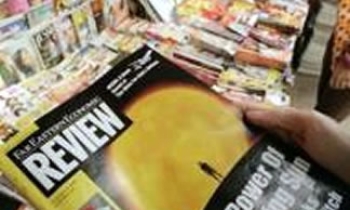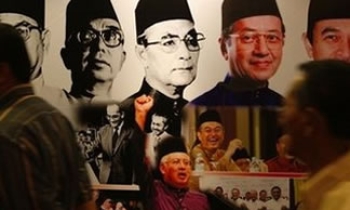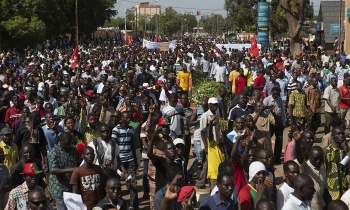NEW YORK: Editors across the country continue to face difficult decisions surrounding the cartoons featuring the prophet Muhammad, which have set off rioting abroad. Few American papers have published the cartoon so far, although several have shown them on their Web sites or provided Web links.
Here is a look-around:
* Four top editors at the New York Press, a weekly in New York City, resigned Tuesday after being ordered, they claim, to pull the Danish cartoons -- from an issue that centers on the dispute. Editor in chief Harry Siegel charged that the Press leadership "has suborned its own professed principles. For all the talk of freedom of speech, only the New York Sun locally and two other papers nationally have mustered the minimal courage needed to print simple and not especially offensive editorial cartoons that have been used as a pretext for great and greatly menacing violence directed against journalists, cartoonists, humanitarian aid workers, diplomats and others who represent the basic values and obligations of Western civilization."
* National Public Radio decided not to even post a Web link to the cartoons. "The bottom line for me is that the cartoon is so highly offensive to millions of Muslims that it's preferable to describe it in words rather than posting it on the web," said NPR News executive Bill Marimow, the former editor of The Sun in Baltimore. "In this case, I believe that our audience can, through our reports -- on radio and the web -- get a very detailed sense of what's depicted in the cartoon. By not posting it on the web, we demonstrate a respect for deeply held religious beliefs."
* At USA Today, "we concluded that we could cover the issue comprehensively without republishing the cartoon, something clearly offensive to many Muslims. It's not censorship, self or otherwise," said Deputy World Editor Jim Michaels.
* According to an article in USA Today, New York Times Executive Editor Bill Keller said that he and his staff concluded after a "long and vigorous debate" that publishing the cartoon would be "perceived as a particularly deliberate insult" by Muslims. "Like any decision to withhold elements of a story, this was neither easy nor entirely satisfying, but it feels like the right thing to do."
* A California paper, the Daily Press in Victorville, became one of the few to publish a Muhammad cartoon--the one with the prophet with a bomb in his turban--today, with its editor in a column knocking The Associated Press for refusing to distribute the images. Another small paper in Cheyenne, Wyoming, also published two of the cartoons, and also complained about the AP stance.
* Eric Mink, commentary editor at the St. Louis Post-Dispatch, explains in a column today: "If a government controls what can and cannot be distributed, it’s called censorship. If a media outlet decides for itself what to include and exclude from its products – whether for journalistic or economic reasons, out of respect for possible sensitivities of some readers or concern about possible impact on its community – it’s called editorial judgment.
"Here in the United States, at least two major newspapers in the last week – the Austin American-Statesman and The Philadelphia Inquirer – chose to publish one of the original Danish cartoons to illustrate stories about the controversy and violence. Other papers, including the Post-Dispatch, have decided that the images aren’t necessary to communicate the story. It’s called judgment."









